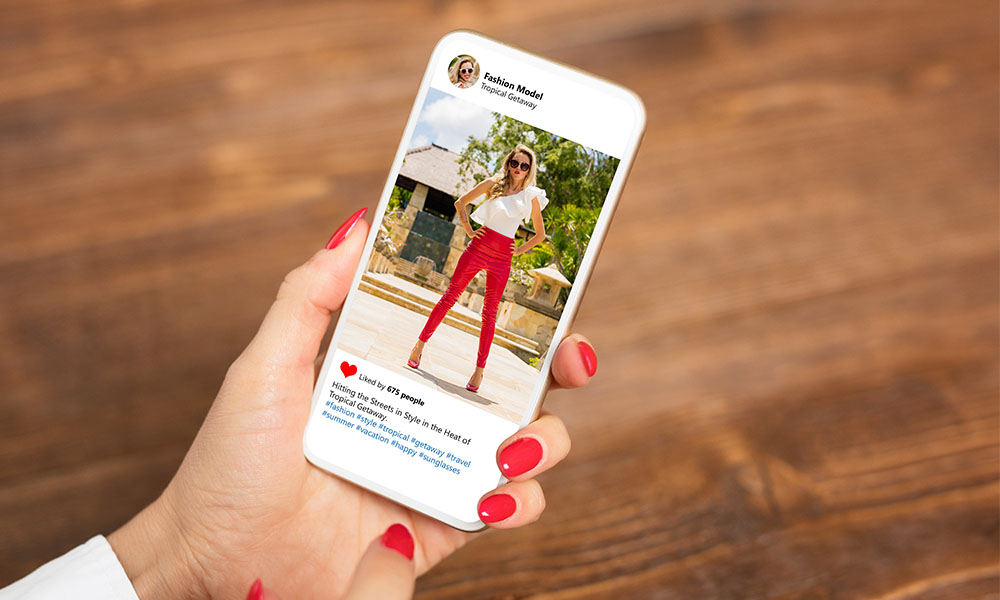More often than not, businesses and brands are turning to social media influencers to help spread their messages, gain awareness, and win over the masses. These pay-for-play personalities make it their jobs (literally) to make you happy and can change the way your business engages and interacts with potential customers. Successful social media campaigns must be a comprehensive mix of your personalized voice, authentic engagement, worthy visuals, branded and topical posts, and now influencer content.
Relevant influencer content is great, but not all influencers create equal content. Here are some tips and tactics on what to look for when selecting the right influencer to meet your marketing goals.
Create Campaign Goals & Targets
Having a clear idea of your must-haves, required stats, and overall influencer objectives will help you understand the type of influencer you need and can keep you on track if you get overwhelmed. Not everyone will be a fit, and it’s important to be particular.
It will help to have campaign “must-haves” in place to help narrow down the sea of options at your fingertips. Are you looking for influencers in a particular geographic location? Do they meet your minimum follower counts and data markers? This could even be something as specific as what university they attend.
If your campaign plans to use both paid and unpaid influencers, what are your must–have stats for both categories? Creating a list of influencer and campaign goals at the very beginning of your search will save you invaluable time.
Find Your Influencer
Though there might be a plethora of “perfect” people to choose from, finding the right influencer for your brand can be harder than you expect. There are numerous online tools and databases that can help you plug in requirements to find potential influencers. However, depending on the size of your company, brand or campaign, and therefore your budget, paying for influencer vetting software might not be an option.
Even if you opt for one of these services, you may find yourself having to do additional vetting, as there is no software that can tell you that an influencer’s vibe and esthetic matches what you are looking for.
If you are trying to build brand loyalty, then you will want to focus on influencers in the same genre as your brand. However, if you are trying to expand your brand awareness and build your audience, then trying out influencers within different categories will be important. For instance, a travel brand might seek out a lifestyle influencer to expand brand awareness by targeting yoga enthusiasts. Or a clothing brand might target a high-end fashion influencer to cement their brand’s reputation as trend setters in the fashion industry.
One free yet time–consuming way to find the right influencers for your campaign is by doing a simple search. Google is your best friend. A search for “top lifestyle influencers” delivers almost 24 million search results; each writer has a different opinion and has decided on the best influencers by looking through their own individual vetting lenses. Each blog or article will have its best choices represented, so look at a few on a couple of lists to see which writer’s vision you most identify with. You may even find that there are influencers that are represented on multiple lists!
There is a blog for every topic and an excess of writers to choose from. Another search that is helpful will be “top ____ blogs.” You will be hard pressed to find a blog that isn’t also tied to that blog’s specific social world. Depending on what you are looking for, and if you have the budget to support it, securing an influencer with a blog has its own benefits.
Create Your Wish List
You may feel overwhelmed by the large number of influencers to choose from. Staying organized and listing your favorites will be helpful, because this is where the real work and in-depth research begins. An easy place to start is with your must-haves and data dealbreakers. Look at their social sites and review their follower counts. This is an easy way to shorten your list.
With that said, if you feel there is an influencer with amazing pictures, great content, and good engagement, but who doesn’t meet your minimum numbers, don’t discount them yet. You may find you have to readjust or re-evaluate your goals as you go along, especially if you have a very specific demographic. At the very least, these particular influencers might be a great way to get some free user-generated content that you can share on your own social channels.
Vet Your Targets Against Your Criteria
Another easy way to cut down your list is to consider the demographics and psychographics of the influencers you are vetting. Now that you have your list, it comes down to whether they represent who you are.
Are they the right age, gender, geographic location, or does that matter? What are their interests and motivations and do those align with your product or brand values? Do they have previous sponsored content on their page?
By looking through various influencer’s platforms, you will eventually get an idea of what you are looking for, whether that is a certain esthetic or something that will resonate with your already loyal following. Read their posts and study their digital habits; a simple “vibe check” can go a long way.
More important questions to ask yourself:
- Are they relevant to your topics or brand?
- What is their credibility to products in your category?
- What is their sponsored engagement rate vs overall engagement rate? The only one that matters is sponsored engagement.
There are currently over 570 million blogs out there and 86% of content makers use them, so it is more likely than not that your influencer will have this additional platform for you to utilize. With blogs I suggest looking at the esthetic and vibe. Does it look like someone threw together pictures of their family vacation on a WordPress template, or are there nicely organized sections and tabs to filter their content?
Many blogs will offer media kits with extra information about their audience, previous branding sponsorships or partnerships, or how many subscribers they have to their newsletters. It is worth noting that previous sponsorships are great, but it will be important to ask what the success rate of that partnership was. Did they just make pretty pictures, or did they increase followers and sell product?
It will also be helpful to know the blog’s unique visitors per month (UVPM) and domain authority (DA). These could also be featured on the blog. The DA is a search engine ranking score that is a measure of the site’s relevance to a subject area or industry and shows how successful a site is based upon search engine results. Generally anything over 50 is considered good. You can get this free overview of search engine performance from a software development company called Moz.
Influencer Budget and Negotiations
You have your list, yay! Now it is actually time to reach out to your chosen influencers. After all of that time you spent on finding and vetting them, you want them to be a right fit and they want to be a right fit too.
Just like your own “deal-breakers,” your budget may narrow down your list even further. Determining which one will offer the right results to fit your campaign will come down to feel and your marketing budget.
Price tends to go up with the number of followers. If a blog post and newsletter mailing is part of your deal, the price can go even further. You may want to use paid influencers, unpaid influencers or both, depending on your budget and size of your campaign.
Do some research online to find an example of the approximate influencer pricing for various types of campaigns. Many influencers who are trying to gain followers and popularity will work in exchange for product/experience, or whatever it is you are promoting. You can always ask them to do it for trade—the worst they can say is no.
Online research should reveal the approximate influencer pricing for various types of campaign participation.
You’ve signed a contract—now what?
Many times, companies will want a firm list of deliverables from their influencer. It is definitely okay to have a must-have shot list. If there is something you would like to feature, a certain product demonstrated, or event highlighted—tell them. You are paying and they want you to be successful because it helps them to have successful content.
Do not, however, script their entire campaign. Give them creative prompts but not exact messages. Provide the message and vibe you are trying to communicate, but also give them some control and let them play to their strengths. They know their audience and what they will respond to, so work with them to decide the look of the posts and then let them do what they do best. Together, you may even go viral!
Influencer marketing may not be right for every brand, but we find it to be an influential tool for brand awareness on specific campaigns. With a little time, a clear idea of what you are looking for, the right tools for searching, vetting criteria and a contract in place, hiring the right influencers combined with unique and relevant curated content will help create a fully integrated marketing campaign.
ABOUT THE AUTHOR: Corie is a Communications Strategist with Wright On Communications. With more than 10 years of experience in prior marketing roles in the Santa Barbara and Los Angeles markets, Corie supports the (W)right On team in multi-channel digital marketing, client relations management, social media, copywriting and copyediting, research and analytics, media pitching and more.













 Grant Wright
Grant Wright Corie Fiebiger
Corie Fiebiger
 Shae Geary
Shae Geary Phelan Riessen
Phelan Riessen Katrina Early
Katrina Early Hamish Marshall
Hamish Marshall